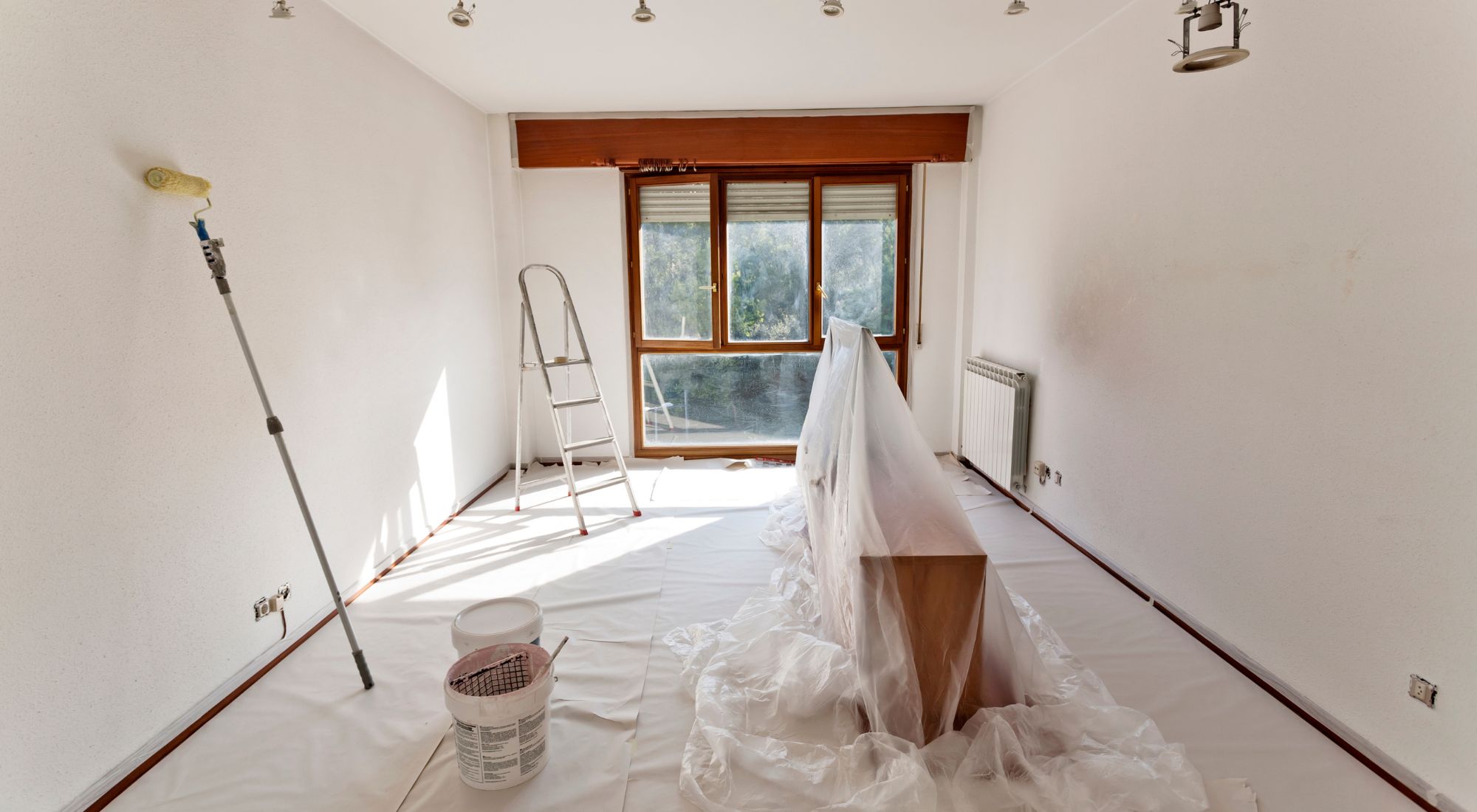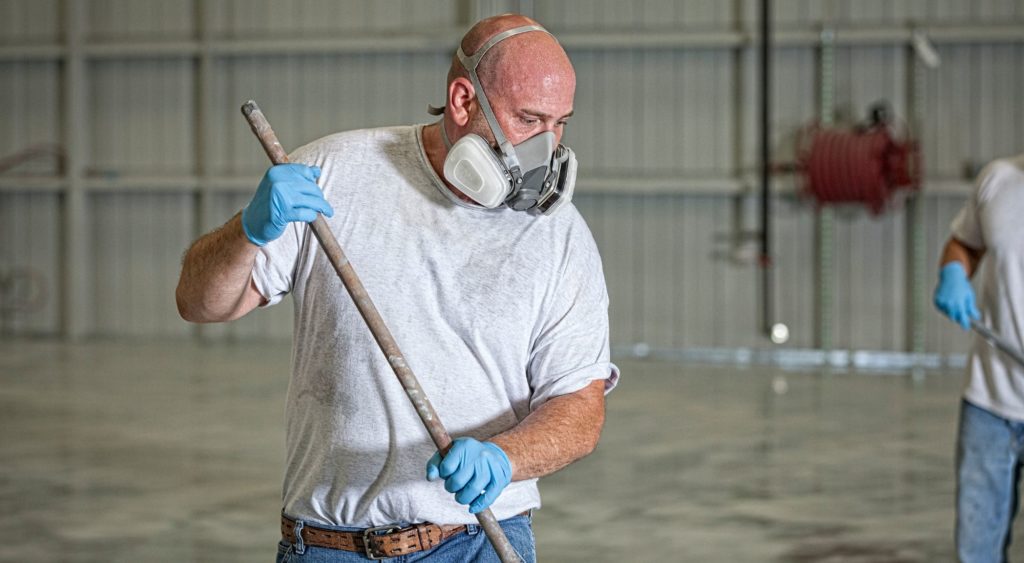Applying a fresh coat of paint is a great way to transform the look of your home’s interior. Unfortunately, some paint products release fumes that can have significant short and long-term health effects if preventive measures are not taken.
But what makes some paint fumes so harmful? And what steps should be taken after inhalation? Read on as we answer these questions and more below.
Table of Contents
- VOCs, Heavy Metals, and Paint Inhalation
- The Risks of Paint Fume Inhalation
- What To Do After Inhaling Paint Fumes?
- Paint Inhalation Prevention: Be Proactive, Not Reactive
- Avoid the Risks of Paint Inhalation: Trust in Two Brothers Painting To Ensure Your Safety
What Are Paint Fumes?
We’ve all heard of the dangers of lead-based paint – which was so hazardous that it was banned by the US Consumer Product Safety Commission in 1978 – but there are still plenty of products on the market that can be harmful to your health.
Most common indoor paints have the potential to release Volatile Organic Compounds (VOCs) throughout the application and drying process. VOCs are carbon-containing substances that vaporize at room temperature. They are responsible for the overwhelming odor of the paint, and they can cause short- and long-term health effects if safety measures are not taken before, during, and after application.
Thankfully, most paints include a measurement of their VOC count per liter. Packaging may also include one of these five classifications:
- Minimal: VOC content 0% to 0.29%
- Low: VOC content 0.30% to 7.99%
- Medium: VOC content 8% to 24.99%
- High: VOC content 25% to 50%
- Very high: VOC content more than 50%
Indoor paints are typically broken down into two categories: oil-based and water-based (latex). Each formula varies in its content, with oil-based paints normally releasing more VOCs.
Oil-based Paint
Oil-based paints typically have higher volatile organic compound (VOC) emissions than water-based or latex paints. This is because oil-based products use organic solvents that emit higher levels of VOC as they dry. In addition, many formulas contain other harmful substances, such as hydrocarbons.
The drying process for oil-based paints can take up to a month, during which your home’s air quality will be greatly reduced. Because of this, professional painters generally recommend that you plan your oil-based painting project to coincide with an extended vacation.
If you stay in a poorly ventilated home too soon after being painted with an oil-based product, you’ll risk experiencing oil-based paint poisoning.
Oil-based paint poisoning may occur if a large amount of paint is ingested, inhaled, or comes in contact with the skin or eyes.
Symptoms of oil-based paint poisoning may include:
- Abdominal pain
- Nausea
- Vomiting
- Skin irritation
Latex-based Paint
Latex- or water-based paints are popular among homeowners due to their ease of use and environmental friendliness. The primary solvent in latex-based paint is water, which releases significantly less VOCs into the atmosphere than other solvents. Because of this, many people prefer latex-based paints for childrens’ rooms and nurseries.
However, even water can contain trace amounts of VOCs, so it’s still important to take precautionary measures before, during, and after the painting process.
The Risks of Paint Fume Inhalation
Short-term effects of paint fume inhalation may include:
- Headache
- Dizziness
- Nausea
- Eye, nose, and throat irritation
- Breathing difficulties
- Lung irritation
Those who have been exposed to paint fumes long-term may experience more severe effects, such as organ damage (such as to the liver and kidneys) and nerve damage.
Who Is at High Risk From Inhaling Paint Fumes?
- Individuals with compromised respiratory systems – People with pre-existing respiratory conditions such as asthma or chronic obstructive pulmonary disease (COPD) are more susceptible to the effects of VOC inhalation.
- Individuals who are frequently exposed to paint – A 2017 study on the effects of spray painting exposure among painting workers found that long-term exposure to paint fumes can be linked to reduced lung function and pulmonary problems.
- Children – Children with developing immune systems are often more susceptible to the effects of harmful paint fume inhalation. A study by the Harvard School of Public Health (HSPS) found that young children whose bedrooms had high VOC concentrations were at greater risk of developing doctor-diagnosed asthma, rhinitis, eczema, as well as multiple allergic diseases.
- Pets – Pets may be more prone to inhale, ingest, or come in contact with paints containing harmful chemicals during the application/drying process.
- Pregnant women – Exposure to some VOCs may raise the risk for low birth rate, delayed development, and learning disabilities. A 2019 study in the journal Occupational & Environmental Medicine found that pregnant women exposed to paint chemicals are more likely to have a child with autism spectrum disorder.
Solvent-Based Paint Fume Exposure May Be Linked to an Increased Risk for Developing MS
Multiple sclerosis, or MS, is a chronic disease affecting the brain and spinal cord (central nervous system). It disrupts communication between the brain and body, resulting in vision loss, pain, numbness, fatigue, and impaired coordination. Symptoms may vary from person to person but tend to worsen over time.
A 2018 study published in Neurology found that people exposed to paint or other solvents are 50 percent more likely to develop Multiple sclerosis (MS). This risk was also found to increase with longer exposure times. Ultimately, the researchers determined that the MS genes combined with exposure to VOCs were responsible for around 60 percent of the risk of developing MS.
Those with a family history of MS may consider avoiding or taking special precautions around paints containing VOCs.
What To Do After Inhaling Paint Fumes? 3 Steps To Take Immediately
#1: Leave the Area
If you’ve inhaled paint fumes and are experiencing dizziness, lightheadedness, or nausea, immediately relocate to an area with fresh air – preferably outdoors.
#2: Call Poison Control
Once you’ve moved from the area, call the national toll-free Poison Help hotline at 1-800-222-1222 or use the poison control web tool for help.
#3: Drink a Small Amount of Milk or Water
If someone has swallowed paint, give them a small amount of water or milk to help with nausea and burning. Do not do this if the person is experiencing symptoms that may make it difficult to swallow, such as vomiting or convulsions.
Paint Inhalation Prevention: Be Proactive, Not Reactive
Taking the proper safety precautions when painting is crucial, especially if you have at-risk individuals in your home or are using a paint formula with a high VOC content.
Each paint product lists dry times and instructions for use on its safety label. The Environmental Protection Agency (EPA) suggests meeting or exceeding these recommendations.
Below, we’ll list some preventive measures to take in addition to those outlined on your product’s safety label.
Keep the Area Well-Ventilated
Before you open your paint can, it is crucial to ensure the area has good ventilation to reduce VOC concentration in the air. Here are some steps you can take to maximize airflow before, during, and after an interior painting project:
- Open all windows, interior, and exterior doors to encourage cross ventilation. Windows should remain open for at least 2-3 days after painting.
- Push back any window curtains or blinds that may block airflow.
- Securely place box fans within window frames to pull fresh air inside and force paint fumes out of the room. Allow each box fan to run for at least 2-3 days after painting. If it begins to rain or snow, remove fans to prevent electrical shock/fire hazard.
- Since this process will leave your home vulnerable to the outside elements, consider scheduling your painting project during dry periods in the spring or fall.
- Consider having an air purifier running in the room you’re painting and any other rooms that may have been exposed to fumes. Many air purifiers can reduce VOC content.
- When your project is finished, tightly secure any leftover paint containers to prevent fumes from leaking into the surrounding area and affecting your home’s air quality. Be sure to dispose of any leftover, unwanted paint properly.
Wear Protective Gear
You can protect yourself from liquids, fumes, and particulates during the painting process with the proper Personal Protective Equipment (PPE).
Recommended painting PPE includes:
- Respirators – Unlike masks, painting respirators are designed to filter out airborne particulates and organic vapors. Look for a respirator that is NIOSH-approved and states the NIOSH rating on the product. A proper, tight-fitting respirator will protect your deep lungs from inhalation of around 95 to 99 percent of harmful substances.
- Coveralls – Coveralls should fully cover the arms and legs to protect your clothes and skin from paint splashes and splatters.
- Disposable gloves – If you’re working with latex or oil-based paint, impermeable disposable gloves are the best option to protect your hands from direct contact with the paint.
- Protective eyewear – Protective glasses/goggles protect your eyes from splatters and harmful fumes.
- Foot Protection – Your shoes may not provide adequate protection against spills. It’s advisable to use protective footwear coverings in addition to your chosen footwear.
Take Breaks
Taking frequent breaks for fresh air is crucial to reducing the effects of VOC buildup in the body. Fresh-air breaks help clear the lungs and supply the body with oxygen, which may be depleted while painting in a poorly ventilated space.
Avoid the Room After Painting
VOCs and solvents may take several days to completely evaporate, depending on the product. It is generally recommended that you ensure proper ventilation and avoid the painted area for at least 2-3 days after application, especially if you are an at-risk individual or have children and pets more vulnerable to the effects of paint fume inhalation.
Rely On the Professionals
Whether your dream paint has a strong formula or you’re an at-risk individual, a DIY painting project may not be the best option. When you’re in doubt, trust the professionals.
Experienced painters, like Two Brothers in Portland, OR, are fully knowledgeable about painting products, proper application, and necessary safety precautions. We can get the job done quickly and reduce the time it takes to air out the paint fumes.
Avoid the Risks of Paint Fume Inhalation: Trust In Two Brothers Painting To Ensure Your Safety
At Two Brothers Painting, we understand that your family’s health always comes first. With over 145 years of combined experience, our team has the expertise to safely tackle any interior or exterior painting project so you can enjoy a beautiful result without lingering paint fumes.
Our trained professionals also offer services such as:
- Exterior painting
- Pressure washing
- Cabinetry and woodwork
- And more
Ready to transform your home? Call Two Brothers Painting for an estimate today.




